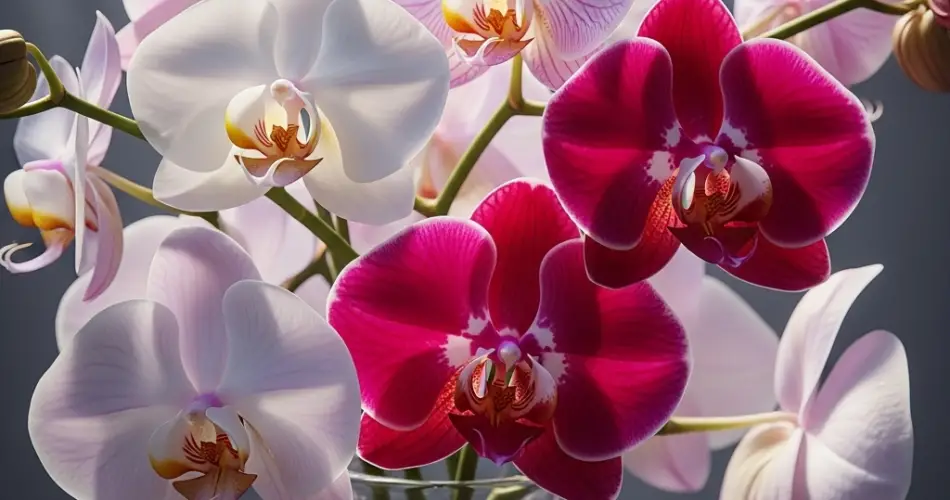Orchids are unique, elegant plants that can thrive for years with the right care—starting with the correct potting medium. Unlike many houseplants, orchids don’t grow in regular soil. Instead, they need a growing medium that allows air to circulate around the roots and drains quickly to avoid rot. Choosing the best potting mix depends on the specific type of orchid you’re growing, as each has different natural habitat preferences. Understanding your orchid’s needs will help you create the best possible environment for healthy growth and long-lasting blooms.
Why the Right Potting Medium Matters
Orchid roots require both moisture and airflow. In nature, many orchids are epiphytes, meaning they grow on trees or rocks and absorb moisture from the air and rain, not from soil. The right potting medium replicates this environment by retaining enough moisture to hydrate the roots while draining excess water and allowing plenty of air circulation.
Using the wrong medium can lead to root rot, poor nutrient absorption, stunted growth, and a lack of flowers. By selecting a potting mix suited to your specific orchid, you can keep your plant healthy and encourage regular blooming.
Common Components of Orchid Potting Mixes
Orchid potting media often include a blend of the following materials:
-
Bark (fir or pine): Provides structure and airflow
-
Sphagnum moss: Holds moisture well; used for orchids that like more humidity
-
Perlite: Improves aeration and drainage
-
Charcoal: Absorbs impurities and odors; helps keep the mix fresh
-
Coconut husk chips: Similar to bark but holds moisture longer
-
Lava rock or pumice: Provides weight and excellent drainage
-
Tree fern fiber: Offers structure and retains some moisture
The right combination depends on your orchid species and the growing conditions you can offer.
Best Potting Medium by Orchid Type
Phalaenopsis (Moth Orchid)
One of the most popular and beginner-friendly orchids, Phalaenopsis prefers a medium that holds some moisture but still allows air to reach the roots.
Recommended mix:
-
Medium-grade fir bark or coconut husk chips
-
Perlite or sponge rock
-
Optional: small amount of sphagnum moss for added moisture retention
This mix ensures a good balance between moisture and airflow, especially in typical home environments.
Cattleya
Cattleyas like their roots to dry out between waterings and need a more open, fast-draining mix.
Recommended mix:
-
Medium to large-grade bark
-
Charcoal
-
Perlite or pumice
Avoid moss-based mixes, as Cattleya roots are prone to rot in overly damp conditions.
Dendrobium
Dendrobiums are adaptable but still prefer a well-draining medium that doesn’t stay too wet.
Recommended mix:
-
Medium bark
-
Charcoal
-
Coarse perlite or small lava rock
Some species may prefer slightly more moisture, in which case you can add a small amount of moss.
Oncidium
Oncidiums prefer more moisture than Cattleyas and may grow better in a slightly finer or more water-retentive mix.
Recommended mix:
-
Fine-grade bark
-
Coconut coir
-
Sphagnum moss
-
Perlite for drainage
Avoid allowing the roots to dry out completely between waterings, as Oncidiums can be sensitive to dryness.
Vanda
Vandas are true epiphytes and prefer to grow with little to no potting medium. They’re often grown in hanging baskets or mounted on slabs.
Recommended setup:
-
No medium or very coarse media like charcoal, lava rock, or large bark chunks
-
Water daily or soak the roots for 15–20 minutes a few times per week, depending on humidity
Because of their exposed roots, Vandas require high humidity and frequent watering.
Paphiopedilum (Lady Slipper Orchid)
Unlike most orchids, Paphiopedilums are terrestrial or semi-terrestrial and like more consistent moisture around their roots.
Recommended mix:
-
Fine bark
-
Sphagnum moss or coconut coir
-
Perlite
-
A small amount of charcoal
This mix helps retain moisture while still allowing some airflow.
Cymbidium
Cymbidiums grow well in a heavier medium and can tolerate more moisture than many orchids.
Recommended mix:
-
Coarse bark
-
Perlite
-
Charcoal
-
Optional: some sphagnum moss or peat to improve water retention
These orchids also enjoy cooler temperatures and are often grown outdoors in temperate climates.
Tips for Choosing and Maintaining Orchid Media
-
Repot regularly: Orchid potting mixes break down over time, reducing airflow and water drainage. Repot every 1–2 years, or when the media looks soggy, compacted, or decomposed.
-
Adjust for climate: In dry environments, add more moisture-retaining materials like moss or coconut coir. In humid areas, stick to bark and perlite for better airflow.
-
Don’t use regular potting soil: It retains too much water and can suffocate orchid roots.
Conclusion
Choosing the right potting medium is one of the most important steps in successful orchid care. Each type of orchid has unique requirements based on its natural habitat, and matching those needs will lead to healthier plants and more frequent blooms. Whether you’re growing a moth orchid on a windowsill or cultivating exotic Vandas in a greenhouse, selecting the correct growing medium ensures your orchids thrive year after year.



